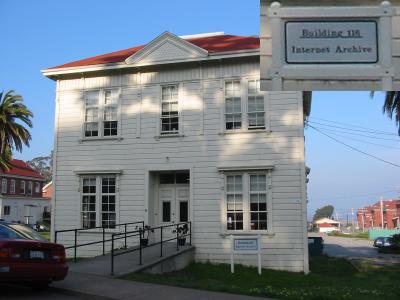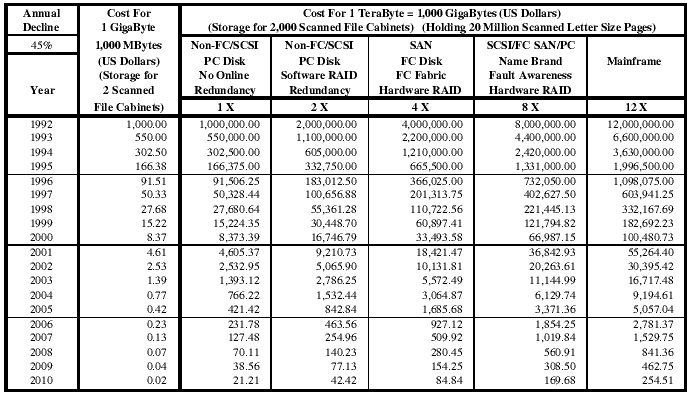Currently:
2002-12-08»
applications for distribution»
Quinn wanted a distributed project to synthesise all possible music, and hand out the copyrights to whoever has the screensaver running at the time. This man clearly needs a distributed project to synthesis all human thought, and good luck to him.
At Biella‘s house last night, somebody was looking for 37,000 signatures to get a proposition onto San Francisco’s ballot. Cory wisely suggested that this was too humble: why not seek out 37,000 propositions, and then get each of the proposers to sign each others’ propositions? Everyone wins! San Francisco’s a creative place, after all, and everyone loves a denial-of-service attack on democracy. My suggestion at this point was to construct a distributed project to generate all possible signatures (therefore guaranteeing all future propositions would be automatically included), then, once that was achieved, a distributed project to generate all possible propositions. Perhaps we could even copyright them all, and win some cash whatever the political outcome.
After that, I fear, the suggestions became quite impracticable.
Comments Off on applications for distribution
2002-12-07»
must… read…»
Nick Szabo has written a layman(ish) guide to smart contracts on First Monday. Which I will read, oh yes. Just after I’ve ploughed through Design Patterns, a cheapo copy of which turned up yesterday. It was getting too embarassing to admit I’ve never read it. It’s a great book for explaining to you what you already knew at some level – and I mean that as a compliment. There’s stuff that these patterns solve that I consistently get wrong, fix, and relearn, only to forget again the next time. Hopefully having a vocabulary will staple this into my head.
Comments Off on must… read…
2002-12-05»
goodbye, chicken dance elmo»
David Docherty, a man who, when he wasn’t bemoaning the immoral anarchy of the Net , was hiring “viral marketeers” to spam newsgroups with fake environmental groups to plug his new novel, finally departed his job at Telewest. His title was “Head of Broadband Content”, which is like being “Man In Charge Of What People Should Say On The Telephone”.
In his parting shot in the Guardian, he says that we’re a “cookie monster” generation, who want everything to be free. He says that the programmers behind P2P are “like Fagin in Oliver Twist – they just want to pick a pocket or two”. And that’s why broadband has failed, apparently.
I can’t think of a single word to say, except: how did he last so long? See ya, Chicken Dance Elmo. Hope you do better in a market intended to promote fictions.
Comments Off on goodbye, chicken dance elmo
how much electricity does the internet use?»
Summary: we don’t know, even if some people claim to. Energy-industry sponsored researcher Mark Mills told everyone it was around 13% of the total U.S. electricity output, in stories like the famous Forbes cry “Dig more coal — the PCs are coming“. The figure was bandied around as a reason for the California blackouts – even as it become obvious that the crazy power prices were down to a faulty deregulatory market and outright manipulation by Enron. Now WSJ columnist David Wessel points to a competing Berkeley report that says its closer to 3%. And admits that the chances are we don’t know. But what’s important is to admit we don’t know.
“When people hear a statistic that matches their assumptions about how the world is going, they tend not to question it,” Mr. Koomey says. That was especially so during the euphoria-induced gullibility of the late 1990s, when WorldCom Inc.’s UUNet subsidiary started an avalanche with the catchy, but false, claim that Internet traffic was doubling every 100 days.
Old assumptions demand re-examination. Are forecasts for electricity demand proving wrong? Some issues demand debate. How much potential does conservation really have? What’s the wisest way to be sure we have enough energy for the future? What should government do or not do to ensure that our children and grandchildren live better? What is best left to the market?
But no good comes from pretending we know more than we do or from treating suppositions as truths.
Comments Off on how much electricity does the internet use?
little house on the info prairie»
So Quinn and I went over to the Internet Archive and interviewed Brewster Kahle about – well, whatever he wanted to talk about. I started with a list of the current Brewster projects I knew about – the Internet Archive, his donation of a copy of the Internet Archive to the Library of Alexandria, the Internet Bookmobile, his plan to light up most of San Francisco with free WiFi, his amicus curiae in the Eldred case, the September 11th archive, the Wayback Machine… he picked the bookmobile, and we talked binding technology, how books on demand now means its a buck-a-book at quantities of one or more, the future role of librarians, the collateral damage of the 1976 copyright law, how to get kids printing Dickens instead of selling drugs, and what happens if he got run over by a bus.
I’ll try and put up my notes after the Irish Times piece is finished, but if I don’t, here are the key blogworthy bits:
Firstly, the Internet Archive is in San Francisco’s Presidio which is a historic ex-military post that magically turned into a park in 1994. I don’t yet have an easy way of describing the feel of the place, but my notes say “Like a colonial version of ‘The Prisoner'” and “Americana-ville, Federalsburg”. It has its own law enforcement, fire and medical services. It’s very hard to estimate who lives there: my guess was all the ex-presidents, from Washington onwards. I expected to see Thomas Jefferson pass me on a golf cart.
The Internet Archive office looks like the village schoolhouse. I meant to ask Kahle how they snagged an office there, but we forgot. I forgot a lot of things; he’s somewhat of a firehose. Usually it’s pretty hard for an interviewee get a word in edgeways with me, but Brewster managed it.

Remember Rafe‘s blog entry about how 93% of pre-1946 copyrighted films are unavailable? I told Brewster and he said, well, they’re doing better than the world of books. 98% of currently copyrighted books are out of print and effectively unobtainable.
Of course, there’s not much he can do about the stuff imprisoned in copyright. But there’s still the public domain. The Archive has plans to scan 1,000,000 public domain books by 2005. If you’d like to contribute your own, pre-Disney works, just scan ’em in page by page as TIFFs and send them to the Archive. They’ll keep them for you, and for the whole of posterity.
He also wants to help libraries to start scanning in their PD collections too; make librarys’ access to their works a two-way street. He quotes Michael “Project Gutenberg” Hart:
We have the technology to take the history of the world to your town, and the history of your town to the world.
It’s a tragedy that children don’t have access to the whole of the public domain. This is what the Bookmobile jaunt was for – to show people the value of the public domain. (The Bookmobile would drive up to schools, set up their satellite dish, let a kid pick a book, and print and bind it for them, then and there. Cost a buck a book. They paid a dollar, and got to keep a book for the rest of their life.)
He talked about his grandfather’s book collection, how so many of those books are unavailable now. He wants to give the collection to his children. But he has two children. Where is he going to get another copy of these out-of-print books? His grandfathers been dead forty years: his library should have passed onto everyone.
“The history of libraries is this: they get burnt down. By governments. I’m not anti-government: I’m a librarian, not a libertarian. But that’s the truth.”
And lots, lots more. I keep hearing him say “we can make a different world, by building it”, which sounds clumsy copied from my notes, but in context, spoken by Brewster Kahle in an old wooden house with a bunch of commodity web servers in one corner, a whiteboard with plans to scan a million books on the wall to the left, and shelf with a freshly minted Alice in Wonderland and his federally-printed submission to the Supreme Court behind me, it made me think of Patrick and Theresa Nielsen Hayden‘s motto:
Work like you were living in the early days of a better nation
…and believe it.
I need to record these things on tape and upload them, don’t I?
Comments Off on little house on the info prairie
2002-12-04»
nice lobes»
Much more detailed info than the keynote is Trevor Marshall‘s talk on security and antenna design and how not to leak signals in directions you don’t want. Or, alternately, given that Marshall designed a parabolic feed that secured a 125Km WiFi link using standard Cisco cards, how to leak in exactly the directions you do want.) I suspect the talk is similiar to the one he gave to the SoCal Wireless Users group, which is streamed on the Linux Public Broadcasting Network if you want to learn more.
He also has some ugly-ass plots of PCMCIA antenna signal strengths (below – the two colours are different polarisations). WiFi card signals are all over the place, which I found out to my cost when I was trying to write a triangulating utility a while back.

Comments Off on nice lobes
um-boingo»
I’m blogging Sky Dayton‘s keynote at 802.11 planet. There’s not been much that’s new, but it’s a nice overview of Sky’s take on the market.
Sky’s “ah-ha” moment was when he was in Aspen, and he saw three APs in his hotel room. Two turned out to be wireless ISPs – both of whom starting scrapping between each other to talk to him. Reminded him of early days of Earthlink.
Survey says: 97% of travelling businessmen would alter their plans to gravitate to high-speed access (high-speed access is more important to them than wireless access)
Ubiquity in laptops – Dell will be putting WiFi in their laptops by default, new iPaq will have WiFi built in.
He sees WiFi in cellphones, cars, gameboys. How low can the power go on these things, I wonder? There must be some physical limit. Maybe we just need more sensitive APs? Sorry, mind wandering – back to Sky.
Only 3,000 commercial hotspots in the US – about a million potential locations (212 conference centers, 3032 train stations, 5352 airports, 72,720 business centers, 202,600 gas stations, 480,298 restaurants and cafes, 1,111,300 retail stores. Wow. There are more airports than train stations in the US.)
But how do you get to ubiquity?
Dayton compares it to early days of ISPs (“Nobody knew who was their customer and who was their competition”). Back then, everybody tried to do everything – owning the wires, the network, and the brands. Eventually each company concentrated in one area – end users are AOL, MSN, networks are UUNET etc, wires are the telcos. (Hmmm. Has this happened in broadband yet?)
Dayton’s division in the WiFi market is: Venues (Mariot, Hilton, Borders, etc). Hot Spot Operators: “(Wayport, T-Mobile, Surf and Sip, etc). Aggregators, who take the fragmented networks and provide cohesion: Boingo, GRIC, iPass. And brands: Boingo, T-Mobile, Earthlink, Sprint, Cingular, AT&T.
Big potential, says Sky, is in Hot Spot Operators. Two aggregators max. But he would say that…
He believes that no one HSO (Hot Spot Operator) will be able to deploy more than 10% of the total footprint – because WiFi’s short range, low barrier to entry, and venue fragmentation. If your brother runs a chain of coffee shops, you could set up a HSO and roll it out, and steal past any bigger HSO. That’s why aggregators are necessary.
Mac version of Boingo sniffer in Q1 2003. Not much talk about *how* it aggregates with HSO.
Some nattering about Hot Spot in a Box – allows any access point becomes a commercial hot spot. Costs $500 includes hardware, will drop to $300 as they talk to major manufacturers — any broadband end point could become a hotspot. There must be a way of turning that into a software app. What kind of cut do these Boingo resellers get?
Hardware with Boingo built-in: Nomadix, Colubris, and Vernier. Fairly minor players. Client software carried with Orinoco, D-Link, SMC, Netgear, HP laptops, Earthlink (doh), Fiberlink. Yeah, but who pays attention to the CDs in the box?
Audience seem a bit underwhelmed. You can see that WiFi is taking off: lots of low-attention-span wide-eyed MBA wolverines sniffing and snarling their business plans on the floor. They already know Sky’s overview – they want to know what everyone is going to do for them, or what they can do to everyone else.
The conference is much much bigger than last year, but I think the smarts has got a bit more dilute. Ah, well – once more into the J-curve…
Now, should find Glen and feed him some Theraflu?
Comments Off on um-boingo
waiting for the exabyte drive»
A friend wrote asking me if a petabyte would be an affordable amount of disk storage in five years time. Blowed if I know, but in scrabbling to answer, I did find this great projection of the next twenty years of magnetic storage. It contains this graph which is based on IBM estimates of future storage capacity and price. (which I couldn’t be bothered to convert into HTML – hey, but maybe you will and sent the text to me. Updated 2004-07-11: For my birthday, Adrian Furby sent me this HTMLised. Thanks, Adrian!)

| Annual Decline |
Cost for 1 GigaByte
1,000 MBytes
(US Dollars)
(Storage for 2 Scanned File Cabinets) |
Cost For 1 TeraByte = 1,000 Gigabytes (US Dollars)
(Storage for 2,000 Scanned File Cabinets) (Holding 20 Million Scanned Letter Pages) |
| 45% |
Non-FC/SCSI
PC Disk
No Online Redundancy |
Non-FC/SCSI
PC Disk
Software RAID Redundancy |
SAN
FC Disk
FC Fabric Hardware Raid |
SCSI/FC SAN/PC
Name Brand
Fault Awareness Hardware Raid |
Mainframe |
| Year |
1 X |
2 X |
4 X |
8 X |
12 X |
1992
1993
1994
1995 |
1,000.00
550.00
302.50
166.80 |
1,000,000.00
550,000.00
302,500.00
166,375.00 |
2,000,000.00
1,100,000.00
605,000.00
332,750.00 |
4,000,000.00
2,200,000.00
1,210,000.00
665,500.00 |
8,000,000.00
4,400,000.00
2,420,000.00
1,331,000.00 |
12,000,000.00
6,600,000.00
3,630,000.00
1,996,500.00 |
1996
1997
1998
1999
2000 |
91.51
50.33
27.68
15.22
8.37 |
91,506.25
50,328.44
27,680.64
15,224.35
8,373.39 |
183,012.50
100,656.88
55,361.28
30,448.70
16,746.79 |
366,025.00
201,313.75
110,722.56
60,897.41
33,493.58 |
732,050.00
402,627.50
221,445.13
121,794.82
66,987.15 |
1,098,075.00
603,941.25
332,167.69
182,692.23
100,480.73 |
2001
2002
2003
2004
2005 |
4.61
2.53
1.39
0.77
0.42 |
4,605.37
2,532.95
1,393.12
766.22
421.42 |
9,210.73
5,065.90
2,786.25
1,532.44
842.84 |
18,421.47
10,131.81
5,572.49
3,064.87
1,685.68 |
36,842.93
20,263.61
11,144.99
6,129.74
3,371.36 |
55,264.40
30,395.42
16,717.48
9,194.61
5,057.014 |
2006
2007
2008
2009
2010 |
0.23
0.13
0.07
0.04
0.02 |
231.78
127.48
70.11
38.56
21.21 |
463.56
254.96
140.23
77.13
42.42 |
927.12
509.92
280.45
154.25
84.84 |
1,854.25
1,019.84
560.91
308.50
169.68 |
2,781.37
1,529.75
841.36
462.75
254.51 |
As you can see, a petabyte will still cost about $70,000 in 2008. Consolation prize: a terabyte will sell for $70. Better start saving those files now!
Comments Off on waiting for the exabyte drive
so much for the protection of copyright»
According to a cursory IMDB search, Jason Schultz has discovered that 93% of the movies released from 1927-1946 are unavailable (it’d be interesting to include current TV showings in this – what was that site that let you grep through US TV listings for keywords?). As an interesting aside, the IMDB has 36,386 titles for that period. The copyright office says there are 37,144 – which means that the IMDB, a largely amateur effort, has snagged 98% of the titles. All goes to show that Kevin Kelly’s assertion that enthusiasts might be better at preserving film history than paid copyright holders might turn out to be true. (Off of the rc3.org)
Comments Off on so much for the protection of copyright
2002-12-03»
signs i’m getting through my mail backlog»
A new and better patch for the old linux-wlan on the 2.4 kernel; an addition to How To Wash Dishes that was meant to be added in March (sorry Dave.)
Comments Off on signs i’m getting through my mail backlog



